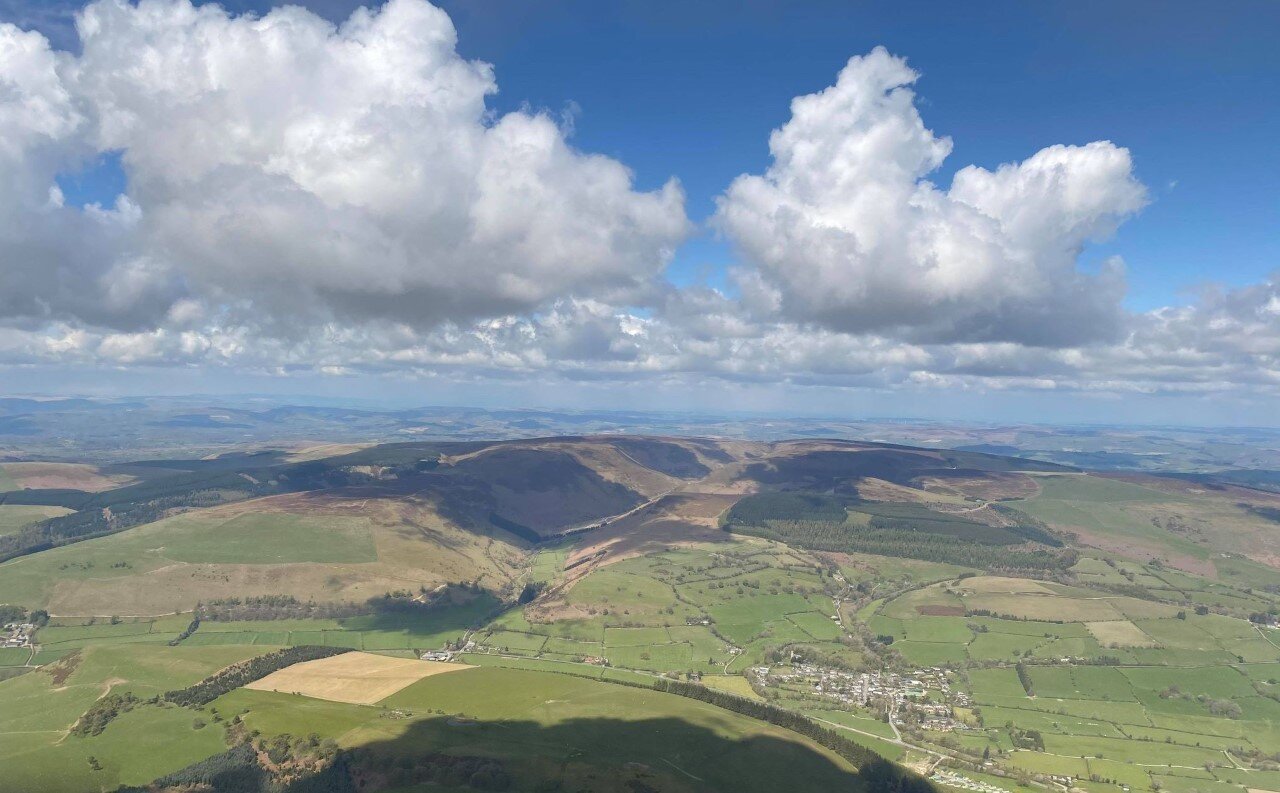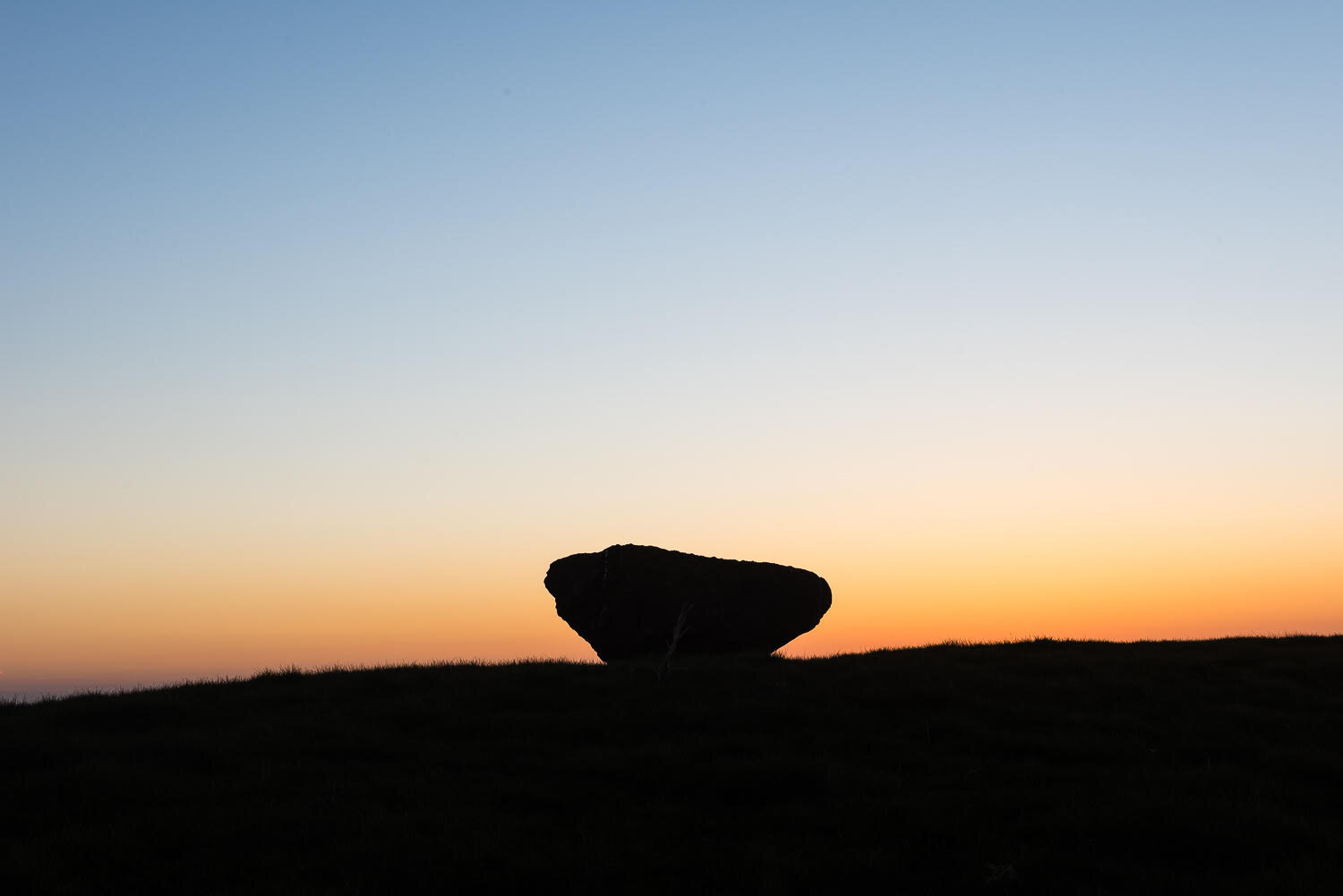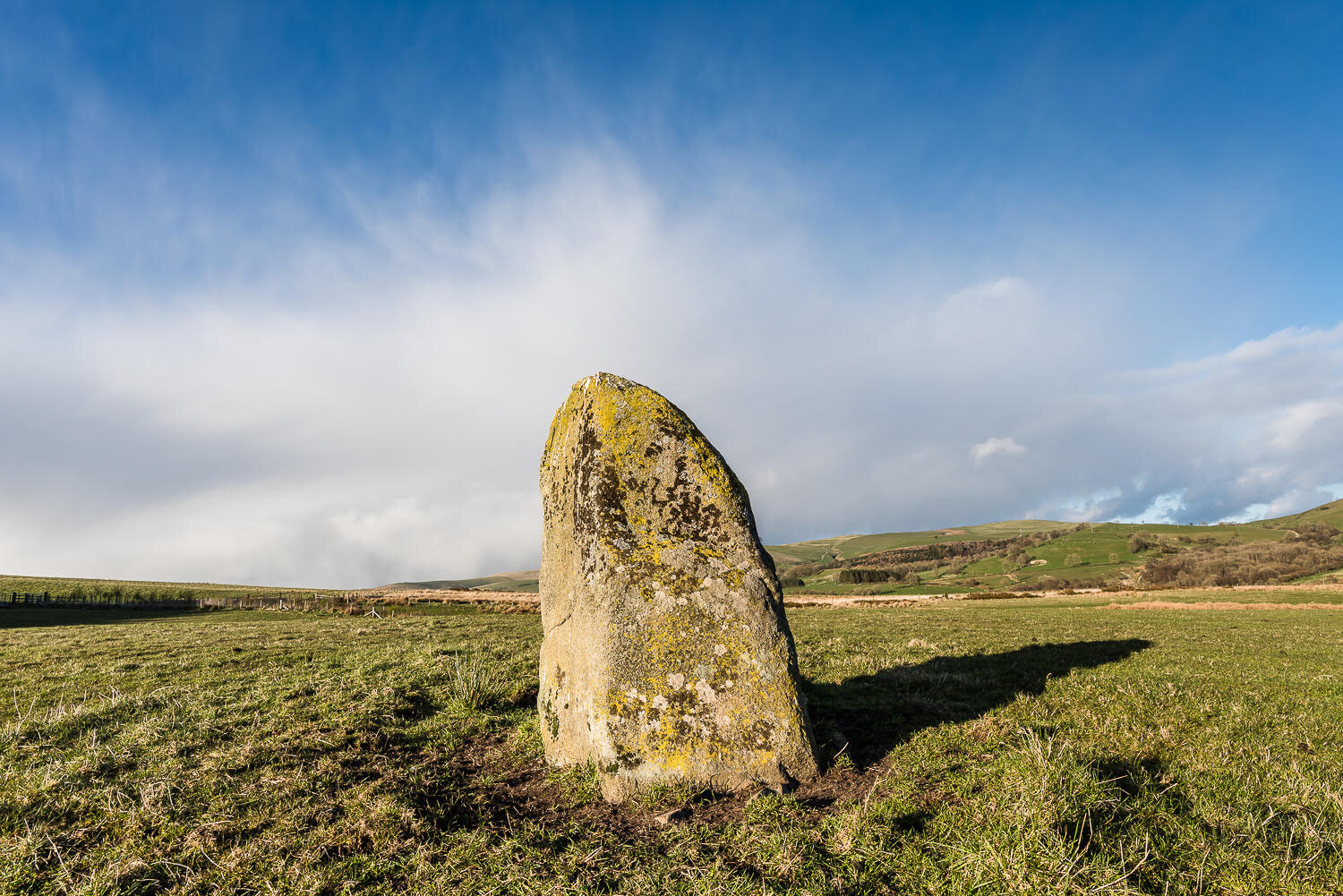Searching for Stones
Aerial photo of NewRadnor and the Radnor Forest by Alex Ramsay.
It wasn’t for many years that I realised how rich in prehistoric monuments this area is. Following in the footsteps of many others, I have finally begun to explore what this corner of Radnorshire has to offer the amateur stone seeker. Roughly 4000 years ago the Walton Basin was one of the more densely populated areas in Europe. Post holes have been discovered which indicate that there was a vast palisaded area enclosing as much as 35 hectares of land, with about 1400 oak posts standing 18 feet high and weighing over 4 tons apiece, built for some unknown purpose. There was also at least one cursus - a double line of ditches - running for perhaps as much as 4 km. Standing stones and tumuli (burial mounds) dot the countryside. We can only guess, but it seems likely that this was a ritual landscape of huge significance to many generations of people.
The Four Stones circle is of course the best-known locally, but there are so many more monuments near by - even St Stephen’s church in Old Radnor is thought to be built on a Bronze Age mound, and there is a probable standing stone in the churchyard, repurposed as a gravestone. Some say that the massive church font (from the original sixth-century church destroyed by Owain Glyndŵr) was itself carved from a pre-Christian ritual stone.
The striking female shape of the Whimble dominates the valley, and the willing eye can easily see alignments and correspondences between several of the menhirs (maen hîr, long stone) and this and other summits around. Each stone I find and photograph encourages me to go a little further and seek out more.








